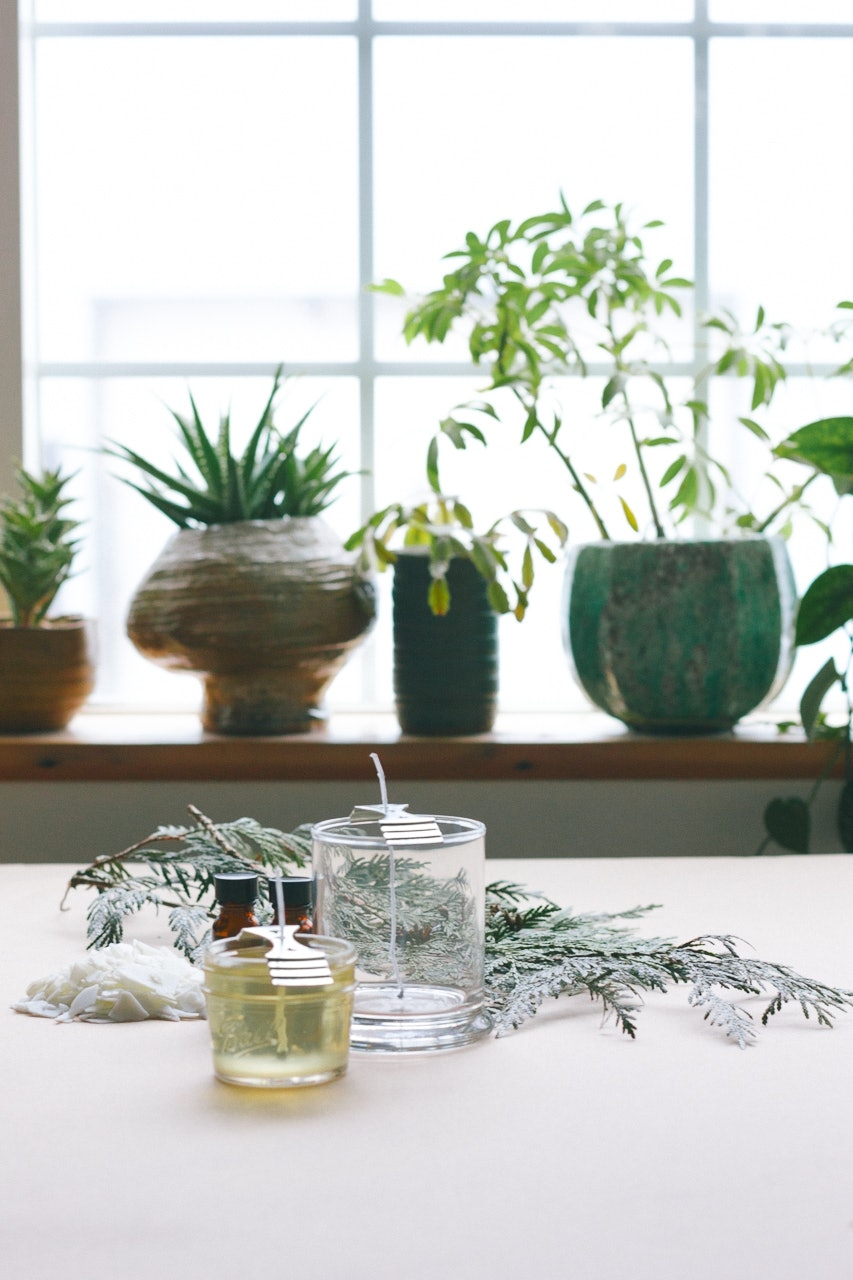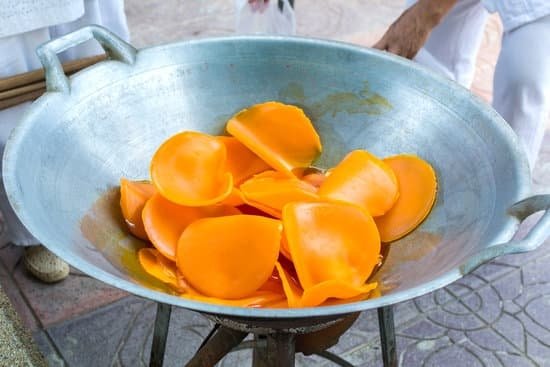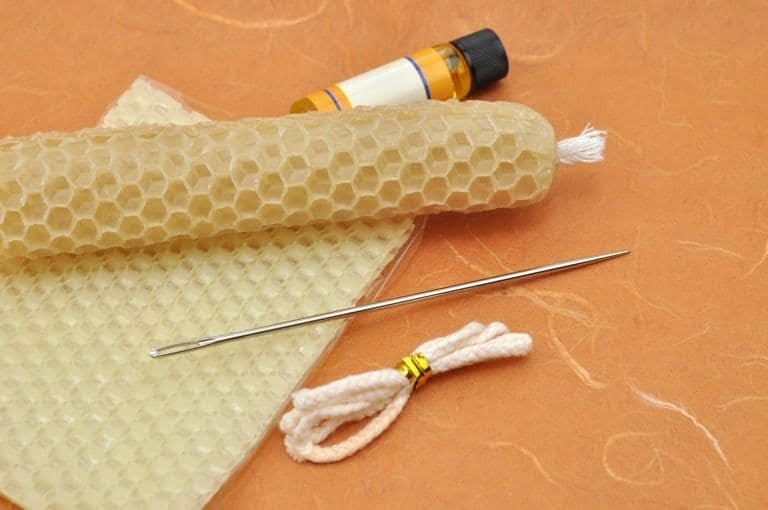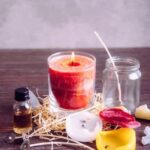Candle making can be a fulfilling and creative hobby, but it is essential to prioritize safety throughout the process. One of the crucial aspects of candle making is choosing the right receptacles. The receptacle in which a candle is made plays a significant role in ensuring its safety and longevity. In this article, we will explore safe receptacles for candle making, discuss unsuitable options to avoid, and provide guidance on selecting the best containers for your candles.
Selecting suitable receptacles for candle making is of utmost importance. Using improper containers can pose potential risks such as fire hazards or breakage during burning, putting both yourself and your surroundings in danger. Containers that are not designed for heat resistance or those made from easily flammable materials should be avoided at all costs.
This blog post will focus on how to choose safe and appropriate receptacles for candle making. We will explore different types of containers that should be avoided due to their low heat resistance or risk of shattering. Additionally, we will provide an overview of preferred materials like glass, ceramic, and metal that enhance safety, longevity, and even aesthetics of the candles you create.
By understanding the importance of selecting safe receptacles and exploring suitable options available to you, you can ensure a safer and more enjoyable candle-making experience. Let’s dive into this topic further and learn about the types of containers to avoid as well as the best receptacle options for your candle-making projects.
Types of Containers to Avoid for Candle Making
Plastic Containers
One type of container that should be avoided for candle making is plastic containers. Plastic has a low heat resistance, which means it can easily melt or warp when exposed to the high temperatures of a burning candle. This poses a risk of the container melting and potentially causing a fire hazard or releasing toxic fumes. Additionally, plastic containers may react with the fragrance oils or other ingredients in the candle, leading to contamination or deterioration of the product.
Thin Glassware
Another type of container to avoid for candle making is thin glassware. Thin glasses, such as wine glasses or delicate vases, are not suitable for holding candles because they have a higher risk of shattering under high temperatures. The heat generated by the flame can cause stress on the glass, leading to cracks or breakage.
This could result in hot wax spilling out and causing burns or increasing the fire risk. It’s important to choose glass containers that are specifically designed and labeled as suitable for candle making.
Easily Flammable Materials
Containers made from easily flammable materials, such as paper or cardboard, should also be avoided for candle making. These materials pose a significant fire risk when exposed to an open flame. They can quickly catch fire and spread flames throughout your space, endangering both people and property. Stick to materials that are resistant to heat and offer stability for safe use.
By avoiding these types of containers in candle making, you can reduce potential hazards and ensure a safer crafting experience. It’s essential to prioritize safety when selecting receptacles for your candles, as this will help prevent accidents and maintain the integrity of your finished products.
Safe Receptacle Options for Candle Making
When it comes to candle making, selecting the right receptacles is crucial for both safety and quality. The choice of container can greatly impact the overall experience of using the candle, so it’s important to opt for safe and appropriate receptacles. In this section, we will explore some of the best options for candle making containers that prioritize safety, longevity, and even aesthetics.
Glass containers are one of the ultimate safe bets for candle making. They offer high heat resistance, ensuring that the container won’t shatter or crack when exposed to the intense heat of a burning candle. Glass is also non-reactive, which means that it won’t interact with the fragrance oils or any other ingredients used in the candle-making process.
Moreover, glass containers provide durability and allow for a wide variety of shapes and sizes to suit different candle styles. Heat-resistant tempered glass or sturdy mason jars are excellent choices within the realm of glass containers.
Ceramic containers are another aesthetically pleasing option for candle making. Not only do they retain heat well, but they also help distribute fragrance evenly throughout the room as they gradually warm up. Ceramic containers come in various shapes, designs, and finishes, allowing you to find a style that complements your decor or personal preference. However, it is important to select food-grade ceramic containers to ensure safety during use.
Metal containers offer a stylish and secure choice for candle making due to their versatility and durability. Tin, aluminum, or stainless steel containers are popular options in this category. Metal containers are resistant to heat and can withstand prolonged use without compromising their integrity. It’s crucial to use clean and non-corroded metal containers to avoid any adverse reactions with fragrance oils or other ingredients used in your candles.
When choosing safe receptacles for your candles, several factors should be considered. Firstly, heat resistance is essential as it ensures that the container can handle high temperatures without any safety risks.
Stability is also important to prevent the container from tipping over during burning, so selecting wider-based containers is advised. The size of the container affects the melt pool and can impact the scent throw of the candle, so it’s worth experimenting with different sizes to achieve your desired result.
Glass Containers
When it comes to choosing the safest receptacle for candle making, glass containers are an excellent option. Glass containers have numerous advantages that make them the ultimate safe bet for candle making enthusiasts.
First and foremost, glass containers have a high heat resistance. This means that they can withstand the heat generated by burning candles without any risk of melting or warping. Glass is also a non-reactive material, which ensures that it will not interfere with the fragrance or wax used in the candles. This is particularly important when using scented candles, as certain materials can react with the fragrance oils and compromise their quality.
One of the key advantages of using glass containers is their durability. Glass is a sturdy material that can withstand impacts and accidental knocks without shattering easily. This makes glass containers much safer than thin glassware or other fragile materials that may break or crack during use. Additionally, glass containers come in a variety of shapes and sizes, allowing for versatility in candle styles. Whether you prefer classic votives or larger container candles, there is a suitable glass option available.
In summary, if safety is your top priority when making candles, glass containers are the way to go. They offer high heat resistance, are non-reactive with fragrance oils, and provide durability during use. With various shapes and sizes to choose from, glass containers also allow for creativity in candle making styles. By selecting glass receptacles for your candle making projects, you can ensure a safe and enjoyable experience while creating beautiful candles.
| Advantages of Glass Containers |
|---|
| High heat resistance |
| Non-reactive with fragrance oils |
| Durable and sturdy |
| Variety of shapes and sizes available |
Ceramic Containers
Ceramic containers are an excellent choice for candle making not only because they are aesthetically pleasing, but also because they offer a range of advantages. When it comes to retaining heat, ceramic containers excel. The material has excellent thermal properties, allowing the candle to burn evenly and efficiently. This means that the fragrance is evenly distributed throughout the space where the candle is burning.
One of the key benefits of using a ceramic container for candle making is the variety of shapes, designs, and finishes available. Ceramic containers come in various sizes and shapes, from classic and elegant to modern and trendy. Whether you prefer a simple and clean look or a more intricate design, there is something suitable for every style.
When selecting ceramic containers for candle making, it’s important to choose food-grade options. Food-grade ceramics ensure safety by eliminating any potential harmful materials or chemicals that could be released when exposed to heat. These containers are specifically designed with safe materials in mind and will not react with the burning wax or fragrance oils.
Additionally, ceramic containers contribute to sustainability in candle making. They are durable and can be reused once the candle has burned down completely. Many people repurpose these beautiful vessels as decorative pieces or even as plant pots after their life as a candle container has come to an end.
By choosing ceramic containers as receptacles for your candles, you can enhance both the beauty and functionality of your homemade creations. Not only will you enjoy a visually appealing aesthetic, but you’ll also benefit from even heat distribution and enhanced fragrance throw. Make sure to select food-grade ceramics to prioritize safety in your candle-making journey while contributing to sustainable practices as well.
Metal Containers
When it comes to candle making, metal containers offer a stylish and secure option that many candle makers love. From tin to aluminum to stainless steel, metal containers provide versatility and durability that can enhance both the safety and aesthetic appeal of your candles.
One advantage of using metal containers is their ability to withstand high temperatures. Metal has excellent heat resistance, which means you can safely pour hot wax into these containers without worrying about them melting or warping. This makes metal containers especially suitable for candles with longer burn times or higher melting points.
In addition to their heat resistance, metal containers are known for their durability. They are less likely to break or shatter compared to glass or ceramic options, providing added peace of mind during the candle-making process. Metal containers also come in a variety of shapes and sizes, allowing you to choose the perfect vessel for your unique candle designs.
It’s important to note that when selecting metal containers for candle making, it’s crucial to use clean and non-corroded options. Metal containers should be free of any rust or corrosion as this can cause reactions with fragrance oils or compromise the safety of your candles. Always inspect your metal containers before use and ensure they are in good condition.
Essential Factors to Consider When Choosing Safe Receptacles
When it comes to candle making, selecting the right receptacles is essential for safety and optimal performance. There are several factors to consider when choosing safe receptacles that will enhance the quality of your candles.
One important consideration is heat resistance. Candles generate a significant amount of heat, so it’s crucial to choose containers that can withstand high temperatures without cracking or shattering. Glass containers, such as heat-resistant tempered glass or sturdy mason jars, are excellent options due to their ability to handle the heat.
Stability is another key factor to consider. It’s important to choose receptacles that have a wide base and are stable enough to prevent tipping over while the candle is burning. Wide-based containers not only provide stability but also allow for effective burning and even distribution of scent.
Size is also an essential factor to take into account when selecting your candle-making receptacles. The size of the container directly affects the melt pool and scent throw of the candle. A larger container will result in a wider melt pool, which allows for better fragrance diffusion. On the other hand, a smaller container may limit the scent throw.
Additionally, it’s important to consider the overall aesthetic appeal of your chosen receptacles. While safety should always be prioritized, you can still select containers that complement your candle designs and enhance their visual appeal. Whether you prefer the classic elegance of glass, the rustic charm of ceramic, or the sleekness of metal, there are various options available to suit your style.
By carefully considering these essential factors – heat resistance, stability, size, and aesthetics – you can ensure that you choose receptacles that are safe and suitable for your candle-making needs. Prioritizing safety in every aspect of candle making will not only protect you and those around you from potential hazards but also contribute to a more enjoyable and successful crafting experience.
Best Practices for Candle Safety
When it comes to candle making, prioritizing safety is essential to prevent accidents and ensure a satisfying and worry-free experience. In this section, we will discuss some best practices for candle safety that every candle maker should follow.
First and foremost, it is crucial to add appropriate warning labels to your candle containers. These labels should include information about the potential hazards associated with burning candles, such as keeping them away from flammable materials or being mindful of open flames. Additionally, make sure to use proper wick sizes for your chosen container. Using a wick that is too large can cause excessive heat and pose a fire hazard.
Adhering to safety guidelines throughout the entire process of making candles is also important. This includes using quality ingredients from reputable sources. Poor quality wax or fragrance oils can affect the overall performance and safety of your candles. Make sure to purchase materials from trusted suppliers who offer products specifically designed for candle making.
A burn test is another essential step in ensuring the safety of your candles. Before selling or giving away your creations, conduct a burn test by lighting them in a controlled environment and monitoring their behavior. This will help you identify any potential issues, such as excessive smoking or uneven melting.
Lastly, remember to always monitor your burning candles. Never leave them unattended, especially if there are pets or children around. It’s important to have a fire extinguisher nearby just in case an emergency arises.
By following these best practices for candle safety, you can enjoy the art of candle making while minimizing risks associated with improper handling or usage. Always prioritize safety in every step of your candle-making journey to create beautiful candles that bring joy without compromising on well-being.
Conclusion
In conclusion, when it comes to candle making, selecting the right receptacles is crucial for safety and success. Using improper containers can pose various risks such as shattering, low heat resistance, or even fire hazards. Therefore, it is essential to prioritize safety and make informed choices when choosing containers for your candles.
Throughout this blog post, we have explored different types of containers to avoid for candle making, including plastic containers, thin glassware, and easily flammable materials. These containers are unsuitable due to their potential dangers and lack of heat resistance. Instead, we have discussed safe receptacle options such as glass, ceramic, and metal. Each material offers distinct advantages in terms of safety, longevity, and aesthetics.
Glass containers emerge as the ultimate safe bet for candle making. With their high heat resistance, non-reactive nature, and durability, they ensure a secure and reliable container choice. Ceramic containers also provide an aesthetically pleasing option while retaining heat efficiently and distributing fragrance evenly. Metal containers offer versatility and durability but require careful selection to avoid corrosion or reactions with fragrance oils.
While choosing safe receptacles is vital in candle making, other factors such as heat resistance, stability, size should also be considered. The size of the container affects the melt pool and scent throw of the candle; hence wider-based containers are recommended for stability and effective burning.
Remember to conduct burn tests regularly and monitor your candles frequently to ensure safe burning practices in order to prevent accidents from occurring. Ultimately by prioritizing safety throughout the entire candle-making process – from selecting suitable receptacles to handling and burning the finished candles – you can enjoy a rewarding and safe candle-making experience.
Frequently Asked Questions
What containers are safe for candle making?
When it comes to candle making, there are several safe containers that can be used. One popular option is glass jars, as they are heat-resistant and provide a clear view of the flame. Mason jars and jelly jars are commonly used for this purpose.
Another suitable container material is ceramic, which can offer an artistic touch to candle creations. Tin cans, specifically those designed for candle making, can also be safely used. In addition to these options, there are containers made from materials like heat-resistant plastics or specially coated metals that are specifically marketed for candle making.
What to avoid when making candles?
While making candles, it is important to avoid certain practices or ingredients that could potentially pose safety risks or compromise the quality of the candles. Firstly, it is crucial to steer clear of using containers that are not intended for candle making, such as plastic cups or bottles that may melt or release toxic fumes when exposed to heat.
Additionally, avoiding wicks with a metal core is essential to prevent potential hazards such as sparks or burning metal in the flame. It’s also advisable to refrain from using excessive fragrance oils or dyes that could overpower the scent or alter the burning characteristics of the candle.
Can you burn candles in metal containers?
Burning candles in metal containers can generally be safe if certain precautions are taken into account. However, it’s essential to ensure that the chosen metal container is specifically designed for candle burning purposes and has appropriate heat resistance qualities. Some metals tend to conduct heat more effectively than others, so selecting a container made from materials such as aluminum or tin may not be ideal due to their high thermal conductivity.
Instead, opting for containers made from stainless steel or robust metals with suitable insulation properties is recommended when considering burning candles in metal containers. Regular monitoring of candles and maintaining a safe distance between the flame and container edges should always be practiced when using any type of container for candle burning purposes

Welcome to my candle making blog! In this blog, I will be sharing my tips and tricks for making candles. I will also be sharing some of my favorite recipes.





